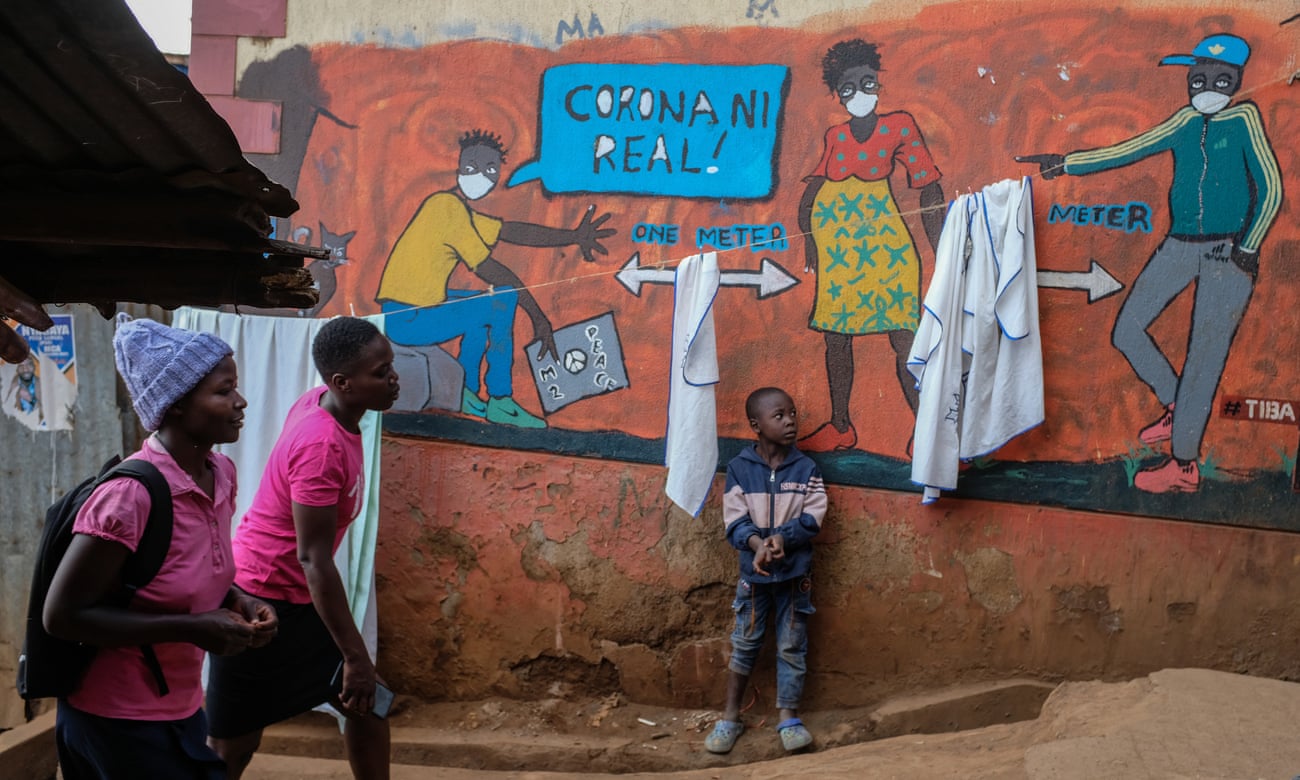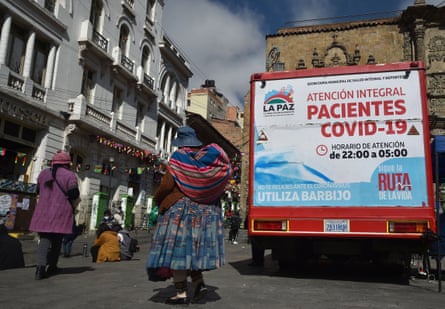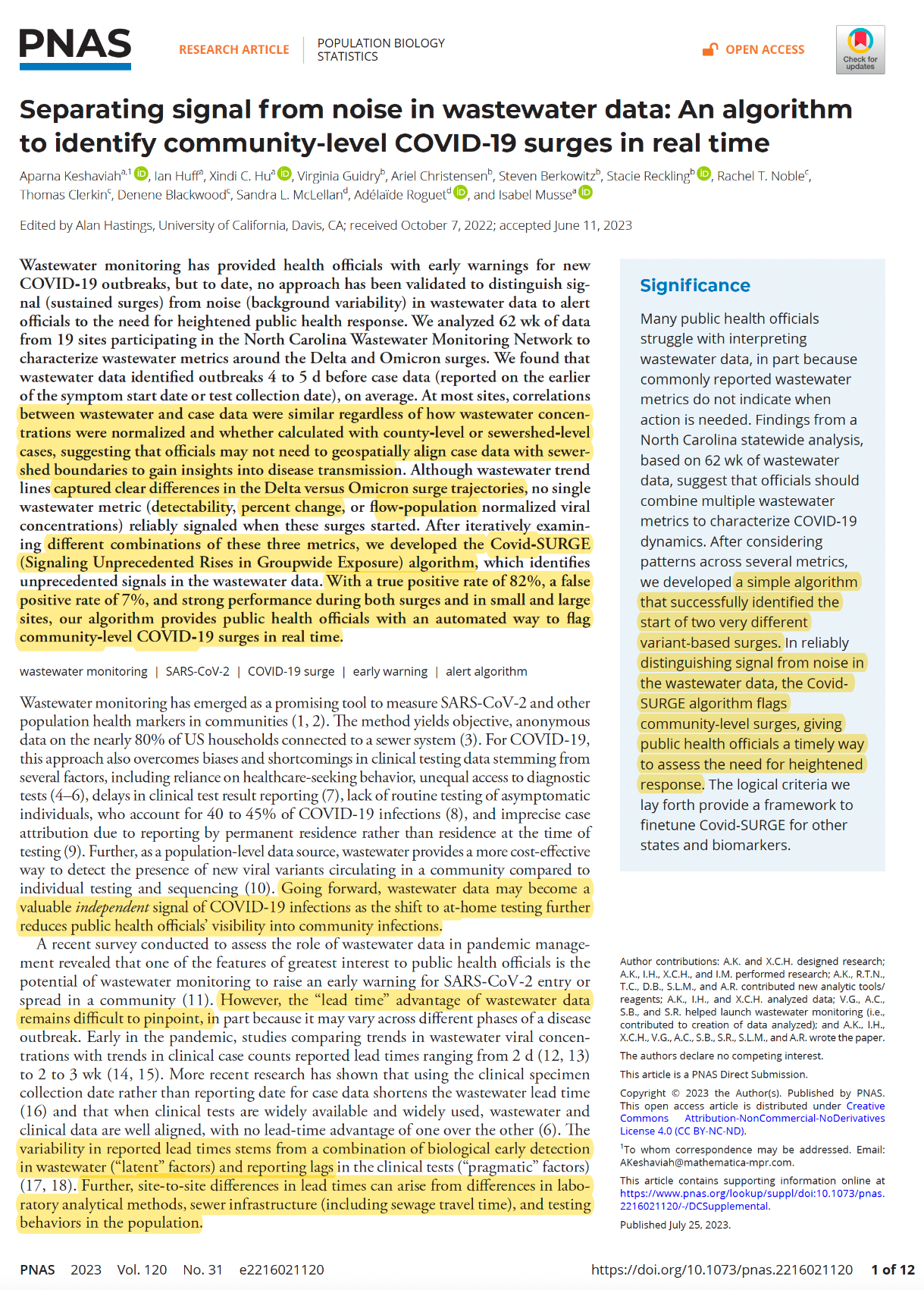You are using an out of date browser. It may not display this or other websites correctly.
You should upgrade or use an alternative browser.
You should upgrade or use an alternative browser.
COVID-19 Pandemic (Coronavirus)
- Thread starter null
- Start date
More options
Who Replied?
Getting COVID-19 causes long-term drop in semen quality: study
More than three months after suffering from COVID-19, men have fewer sperm that are able to swim.
Getting COVID-19 causes long-term drop in semen quality: study
- By Talker News
- Jun 26, 2023 Updated 6 hrs ago

(Photo by cottonbro studio via Pexels)
By Daniel Johnson-Kim
By Stephen Beech via SWNS
Men suffer a long-term drop in semen quality after COVID-19 - even if the infection was mild, reveals new research.
Scientists found that more than three months after suffering from mild COVID-19 infection, men have lower sperm concentrations and fewer sperm that are able to swim.
Professor Rocio Núñez-Calonge said that after an average of 100 days following infection there appeared to be no improvement in sperm quality and concentration, even though new sperm would have been produced in that time.
Núñez-Calonge said: “There have been previous studies that show semen quality is affected in the short term following a COVID infection but, as far as we are aware, none that have followed men for a longer period of time.
“We assumed that semen quality would improve once new sperm were being generated, but this was not the case.
"We do not know how long it might take for semen quality to be restored and it may be the case that COVID has caused permanent damage, even in men who suffered only a mild infection.”
Núñez-Calonge and her colleagues had observed that, in some men attending clinics in Spain for assisted reproduction treatment, semen quality was worse after COVID-19 infection than before the infection - even though they had recovered and the infection was mild.
They decided to investigate if COVID-19 had influenced the decline in quality.
Núñez-Calonge. scientific advisor at UR International Group at the Scientific Reproduction Unit in Spain said: “Since it takes approximately 78 days to create new sperm, it seemed appropriate to evaluate semen quality at least three months after recovery from COVID."
Between February 2020 and October 2022, the research team recruited 45 men attending six reproductive clinics in Spain for the study. All had a confirmed diagnosis of mild COVID-19, and the clinics had data from the analysis of semen samples taken before the men were infected.

(Photo by CDC via Pexels)
By Daniel Johnson-Kim
Another semen sample was taken between 17 and 516 days after infection. The average age of the men was 31, and the amount of time that elapsed between the pre-and post-COVID samples was a median of 238 days.
The researchers analyzed all the samples taken up to 100 days after infection and then analyzed a subset of samples taken more than 100 days later.
They found a "statistically significant difference" in semen volume (down 20 percent), sperm concentration (down 26.5 percent), sperm count (down 37.5 percent, total motility - being able to move and swim forwards (down 9.1 percent) and numbers of live sperm (down five percent).
Núñez-Calonge said motility and the total sperm count were the most severely affected.
Half of the men had total sperm counts that were 57 percent lower after COVID compared to their pre-COVID samples. The shape of the sperm was not significantly affected.
When the researchers looked at the group of men who provided a sample later than 100 days after COVID, they found that sperm concentration and motility had still not improved over time.
Núñez-Calonge said: “The continuing effect of COVID infection on semen quality in this later period may be caused by
permanent damage due to the virus, even in mild infection.
"We believe clinicians should be aware of the damaging effects of SARS-CoV-2 virus on male fertility.
"It is particularly interesting that this decrease in semen quality occurs in patients with mild COVID infection, which means that the virus can affect male fertility without the men showing any clinical symptoms of the disease."
It was already known that the SARS-CoV-2 virus can affect the testicles and sperm, but the mechanism is still not understood.

(Photo by Engin Akyurt via Pexels)
By Daniel Johnson-Kim
Núñez-Colange says that inflammation and damage to the immune system that is seen in patients with long COVID-19 might be involved.
She added: “The inflammatory process can destroy germ cells by infiltrating the white blood cells involved in the immune system, and reduce testosterone levels by affecting the interstitial cells that produce the male hormone.
“It should be mentioned that impairment of semen parameters may not be due to a direct effect of the SARS-CoV-2 virus.
"There are likely to be additional factors that contribute to long-term sperm parameters decrease, but whose identity is currently unknown.
"Furthermore, we did not measure hormonal levels in this study: intense changes in testosterone, a key player involved in male
reproductive health, has previously been reported in COVID-infected male patients.”
The research team plan to continue to study the men to measure both semen quality and hormonal status over a longer period.
They believe there should be more research into the reproductive functions of men after COVID infection to see if their fertility is affected temporarily or permanently.
The findings were presented at the 39th annual meeting of the European Society of Human Reproduction and Embryology (ESHRE) in Copenhagen, Denmark.
ESHRE chair, Professor Carlos Calhaz-Jorge, of the Northern Lisbon Hospital Centre and the Hospital de Santa Maria in Portugal), welcomed the findings.
He said: “This is interesting research by Núñez-Calonge and her colleagues and shows the importance of long-term follow-up of fertility patients after a COVID infection, even if it’s a mild infection.
"However, it’s important to note that the semen quality in these patients after a COVID infection is still within the World Health Organisation’s criteria for ‘normal’ semen and sperm.
"So, it is unclear whether these reductions in semen quality after a COVID infection translate into impaired fertility and this should be the subject of further research.”
null
...
Scientists at center of Covid lab leak 'cover-up' admit decision to downplay theory was 'political' because they feared a 's***show from China'
- House Republicans published messages showing doctors feared China's wrath
High-profile scientists caught up in the controversy over Covid’s origins have admitted the decision to play down the lab leak theory was political.
Internal
 Slack communications obtained by a House subcommittee investigating the early days of the pandemic showed how scientists who wrote a paper dismissing the idea of a lab accident feared retribution from the Chinese government.
Slack communications obtained by a House subcommittee investigating the early days of the pandemic showed how scientists who wrote a paper dismissing the idea of a lab accident feared retribution from the Chinese government.Dr Andrew Rambaut, a biologist at the University of Edinburgh, was a co-author of the March 2020 Nature Medicine research article titled 'The Proximal Origin of SARS-CoV-2' which degenerated believers of the lab leak theory as conspiracy theorists and racists.
Private messages show Dr Rambaut feared pinning the blame on China for ‘even accidental release’ of the virus would cause a geopolitical ‘s*** show’, and so he was ‘content with ascribing it to natural process.’

Scientists at center of lab leak cover-up feared 's***show from China'
High-profile scientists caught up in the controversy over Covid's origins have admitted the decision to play down the lab leak theory was political.



‘No one is talking about it’: the cruelty of long Covid in the global south
As research focuses on richer parts of world, people in less developed countries suffer from lack of awareness and support
Thomas Graham in La Paz, Amrit Dhillon in Delhi and Caroline Kimeu in Nairobi
Thu 13 Jul 2023 11.00 EDT
‘No one is talking about it’: the cruelty of long Covid in the global south

Doctors in Nairobi said greater awareness of long Covid was necessary. Photograph: Sopa Images/LightRocket/Getty Images
As research focuses on richer parts of world, people in less developed countries suffer from lack of awareness and support
In the Hospital del Norte of El Alto, a working-class city in Bolivia, visibly sick patients queue for a consultation with a surgeon. At their feet, two stray dogs sleep on a floor strewn with coca leaves.
Dr Silverio Condori, 49, was here when the coronavirus pandemic arrived in Bolivia. He fell sick in June 2020 and spent two months in one of the country’s few intensive care units. “I came back from another world,” he said.
“When I got out of hospital, I had to learn to walk, to eat, even to speak,” Condori added, pointing to a neat horizontal tracheotomy scar at the base of his throat. “I still have some paralysis in my right side. I’m a surgeon, but I can’t operate. At least I’m still here, thank God.”
Condori is one of what is surely a great number of people living with the after-effects of Covid-19 in low- and middle-income countries like Bolivia.
But as almost all research on long Covid has focused on richer countries, there is little sense of the scale and nature of the health burden in such places – nor is there awareness and support for those suffering from it.
The WHO defines long Covid as the otherwise unexplained continuation of symptoms three months after the initial infection. Common symptoms include fatigue, shortness of breath and cognitive dysfunction – but more than 200 have been reported.
Perhaps 10% of those with infections confirmed by test or hospital admission may go on to develop it, though symptoms can subside with time.

A mobile vaccination and testing medical unit in La Paz, Bolivia, where long Covid is going largely undocumented. Photograph: Aizar Raldes/AFP/Getty Images
With 651m documented Covid cases worldwide, that would mean 65 million individuals have long Covid.
But this could be an underestimate, given that many people were never tested, or treated themselves at home, and so their cases went undocumented.
Still, as the acute urgency of the pandemic faded, attention moved on, especially in the developing world. In Bolivia, not one study has been published on long Covid, and almost nothing has been written in the press. “No one is talking about it,” said Condori.
This lack of attention is essentially common across the global south, according to Dr Juan Carlos Villar, co-chair of the Clinical Epidemiology Working Group, which is developing a pilot study on long Covid in low- and middle-income countries.
“Here in Colombia, long Covid is absolutely underappreciated,” said Villar. “You can see that some people in government might be aware of it, but no one wants to speak about it. Because they know it’s going to be problematic.”
The Guardian interviewed people suffering from long Covid in Bolivia, Kenya and India, all of whom had to go to great lengths to find their own diagnoses and treatments.

Megan Murray: ‘No one took me seriously.’ Photograph: Megan murray
For Megan Murray, a 34-year old singer in Goa, India, sadness at having lost two years of her life is accompanied by anxiety over what the virus has done to her organs. “I want to get married and have children, and I can’t help worrying about what future health issues might spring up,” said Murray.
After her initial infection in April 2021, Murray continued to suffer from muscle cramps, gut issues, dizziness, tachycardia and fatigue that made just walking to the bathroom an ordeal. The doctors she consulted treated her like a hypochondriac.
“No one took me seriously,” said Murray. “I thought I was going crazy until a friend in New York said it might be long Covid.”
In September 2021, the Indian government released a set of guidelines for managing long Covid – the first official acceptance that the problem needed special attention.
By then, Murray had already travelled to the US for treatment, starting her long and still uncertain recovery. Though there are long Covid clinics in India, she was unaware of their existence – and in such a vast country, where tens of millions may have experienced symptoms, a handful of clinics is unlikely to be enough.
Muthoni Njogu described a similar experience in Kenya where, two years after testing positive for Covid-19, the 46-year-old said she had “never recovered”.
Njogu has had myasthenia gravis, a muscle-weakening autoimmune disease, for most of her adult life. But she says long Covid has effectively disabled her, with fatigue, brain fog and memory lapses, as well as cardiac and respiratory symptoms.

Muthoni Njogu: ‘I still look healthy … but I can barely walk 10ft.’ Photograph: Muthoni Njogu
“My body feels like I’m in my 80s,” said Njogu. “I still look healthy … but I can barely walk 10ft.”
Like Murray, Njogu says she has had to advocate for herself with her doctors and be proactive in her treatment. “A lot of doctors [here] don’t know about long Covid,” she said.
Duncan Nyukuri, a doctor at the Kenyatta national hospital who helped develop Kenya’s Covid-19 guidelines, said that, while there was “some acceptance” among the medical fraternity about the existence of long Covid, greater awareness was necessary.
Last year, the Kenyatta University teaching referral and research hospital launched an investigation into long Covid with multilateral health organisations – a step to address the uncertainty that shrouds the condition.
“Very little is known about the burden of this problem especially in Africa and what makes some people more likely to have it,” said the research hospital, whose studies are ongoing.
Back in Bolivia, in La Paz, Emilia Cardozo, an 18-year old student, described the symptoms set off by her Covid infection, which included back pain so severe she was hospitalised, followed by partial deafness and blindness in her right eye.
These symptoms subsided after a few months, but others remained. “My hair was falling out in clumps; my nails stopped growing; my skin was very irritated. And I was still tired: too tired. There are days when I sleep all day but still feel tired.”
When Cardozo consulted doctors, they put it down to stress. She had encountered the same thing as a child, when it took her six years to receive a diagnosis for dysautonomia, a condition of the autonomous nervous system that few doctors in Bolivia were familiar with.
“When you still have symptoms a year later and they tell you that it’s all stress, this affects you psychologically, too,” said Cardozo. “Because you really don’t know; you’re not a doctor. You try to find solutions, but there’s no one to guide you. Everyone’s just trying to treat themselves.”
Cardozo acknowledges that she was relatively fortunate: she could access information in English online and spend on private healthcare. “But people in rural areas or who don’t have the money won’t be able to do the same. Maybe there are a huge number of people living with long Covid that don’t even know it.”
Villar believes that many people in low- and middle-income countries have a “higher threshold for complaints” due to necessity and lack of resources. Even if they are suffering from some residual effects of Covid, perhaps they don’t – can’t – pay attention to them.
“When I was a junior doctor in public hospitals [in Colombia], people would only turn up when they literally couldn’t walk or swallow any more,” said Villar. “And in the mental health facilities, we only saw patients with wild episodes of psychosis, or depression that was almost catatonic.”

Dr Silverio Condori: ‘I’m a surgeon, but I can’t operate.’ Photograph: Dr Silverio Condori
“Having relatively minor depression was labelled as something of the elite. Depression, fatigue, insomnia: these were for rich people.”
One Bolivian doctor, who asked to remain anonymous, said that, even if long Covid seems invisible in poorer countries, it will only add to the daunting burden of chronic diseases that they face. “I think we’re going to see consequences in the coming years, and we won’t know whether to attribute them to Covid.”
Public healthcare, where it exists, may lack the resources to treat such conditions. People’s ability to work will be affected.
“Countries like Bolivia are not equipped to evaluate this kind of health economics,” said the doctor. “The fundamental they deal with is deaths – they’re not thinking in terms of years of life lost, disability, quality of life.”
Countries around the world will struggle to quantify the health burden from long Covid. And if long Covid is understudied, that is doubly true in the global south, said Villar.
But even so, the governments and medical systems in such countries may have other, greater public health concerns.
Dr Caroline Hilari, who coordinates a long Covid study in children in Bolivia with GIZ, a German development agency, says that interest in Covid among the medical profession had faded since the acute phase of the pandemic, and that other doctors often ask them why they are looking at long Covid at all. “It’s not a huge, huge public health problem,” she said. “But over half of the kids in our study are symptomatic.
“I think the fact that long Covid has not been in the media here is basically because we have more deadly diseases,” she added. “Just recently we’ve had kids dying of dengue and scorpion stings. When people die, that gets into the media. But chronic, disabling conditions do not – and maybe that’s the cruelty of being in a less developed country.”



Eric Topol (@erictopol@mstdn.social)
Attached: 1 image If you'd have told me 2 or 3 years ago that a real-time wastewater surveillance algorithm would become the primary way to detect Covid on the rise, I wouldn't have believed it. But it is now: https://www.pnas.org/doi/10.1073/pnas.2216021120
If you'd have told me 2 or 3 years ago that a real-time wastewater surveillance algorithm would become the primary way to detect Covid on the rise, I wouldn't have believed it. But it is now:

In-N-Out bans employees from wearing masks
The California-based burger chain plans to ban face masks on employees in five of the seven states in which it operates, citing the importance of staff "smiles" for customers.
In-N-Out bans employees from wearing masks
CARLY OLSON
July 17, 2023 at 8:17 PM

Only workers in California and Oregon will be exempt from In-N-Out's forthcoming mask ban in five of the seven states in which it operates restaurants. (Robert Gauthier / Los Angeles Times)
California fast-food institution In-N-Out Burger announced that it will soon ban employees from wearing masks in five of the seven states in which it operates restaurants, according to an internal memo leaked Friday.
The exceptions? Workers in California and Oregon will still be able to mask, if they choose, to protect themselves from COVID-19 and other illnesses.
According to the memo, employees will no longer be allowed to wear face coverings come Aug. 14, unless they have a medical note. The company did not immediately respond to a request for comment.
The policy was implemented to "help to promote clear and effective communication" between employees and customers.
"We are introducing new mask guidelines that emphasize the importance of customer service and the ability to show our Associates' smiles and other facial features while considering the health and well-being of all individuals," the memo said.
Read more:Letters to the Editor: Is In-N-Out evil enough to boycott? Not even close
If employees want to continue wearing a mask, they must provide a medical note for "a specific medical condition or health concern that requires them to wear a mask" to their manager or In-N-Out's human resources department. Approved employees must wear a company-provided N-95 mask. (The company did not provide a reason for wearing a company-issued mask versus one purchased by the employee.)
The note "should clearly state the reason for the exemption and include the estimated duration, if applicable," the memo added.
Failure to comply may result in disciplinary action.
Dr. Judy Stone, an infectious disease expert and writer, denounced In-N-Out's new policy on Twitter, saying that it violates COVID-19 recommendations by the Centers for Disease Control and Prevention and endangers employees.
Still, others online voiced their approval of the announcement, agreeing that it would improve customer service and that the move was appropriate, claiming that the pandemic is over.
This is not the first time the beloved burger institution has come under fire for pushing back against pandemic health policies.
In October 2021, In-N-Out's San Francisco location was forced to close its doors temporarily for flouting a local mandate that required indoor customers to show proof of vaccination.
Read more:Inside In-N-Out Burger's escalating war with California over COVID-19 vaccine rules
Just two weeks later, an In-N-Out in Pleasant Hill, Calif., was also closed down for similar reasons, and officials said that the restaurant “repeatedly" violated public health orders.
In-N-Out’s chief legal and business officer, Arnie Wensinger, then defended the chain's stance in a fiery statement: “We refuse to become the vaccination police for any government,” he said.
This story originally appeared in Los Angeles Times.

In-N-Out bans employees from wearing masks in order to show ‘associates’ smiles’
California-based fast-food chain In-N-Out Burger is barring employees from masking for medical reasons in five of the seven states in which it has locations.
Last edited:
the world has moved on 

this is so dumb
i barely see anyone at in n out wearing a mask these days anyway, but they should just let them if they want to.
any fukking weirdo customer bothered by it deserves their food spit in

U.S. sees biggest rise in COVID-19 hospitalizations since December
COVID-19 trends remain far below levels seen at this time last year, but the numbers are ticking upwards.
U.S. sees biggest rise in COVID-19 hospitalizations since December
BY ALEXANDER TINUPDATED ON: JULY 25, 2023 / 4:38 PM / CBS NEWS
Weekly COVID-19 hospitalizations have risen by more than 10% across the country, according to new data published by the Centers for Disease Control and Prevention, marking the largest percent increase in this key indicator of the virus since December.
At least 7,109 admissions of patients diagnosed with COVID-19 were reported for the week of July 15 nationwide, the CDC said late Monday, up from 6,444 during the week before.
Another important hospital metric has also been trending up in recent weeks: an average of 0.73% of the past week's emergency room visits had COVID-19 as of July 21, up from 0.49% through June 21.
The new figures come after months of largely slowing COVID-19 trends nationwide since the last wave of infections over the winter.
"U.S. COVID-19 rates are still near historic lows after 7 months of steady declines. Early indicators of COVID-19 activity (emergency department visits, test positivity and wastewater levels) preceded an increase in hospitalizations seen this past week," CDC spokesperson Kathleen Conley said in a statement.
Conley said virtually all counties are at "low" COVID-19 hospital admission levels, below the thresholds at which the CDC recommends additional precautions to curb the virus.
Only one part of the country did not record more hospitalizations last week compared to the week prior: the Midwestern region spanning Illinois, Indiana, Michigan, Minnesota, Ohio and Wisconsin.
For now, hospitalizations remain far below the levels recorded at this time last year nationwide. July 2022 peaked at more than 44,000 weekly hospitalizations and 5% of emergency room visits with COVID-19 during a summer surge that strained many hospitals.
"The U.S. has experienced increases in COVID-19 during the past three summers, so it's not surprising to see an uptick," said Conley.
Projections have differed over what the coming months will hold.
An ensemble of academic and federal modelers said last month that the "main period of COVID19 activity is expected to occur in late fall and early winter over the next 2 years, with median peak incidence between November and mid January."
They cautioned that there were considerable differences between models within the group, with some teams projecting an additional smaller peak elsewhere in the year.
In the U.S., 2021 saw larger peaks in August and December, driven by the Delta and Omicron variants, respectively. In 2022, hospitalizations peaked at similar levels in July and January, driven by different descendants of the original Omicron variants.
Variants and vaccines
Unlike previous waves, no single variant has yet emerged this summer to dominate infections nationwide.Instead, the CDC's current projections estimate that a mix of descendants from the XBB variant that first drove infections last winter are now competing around the country.
Largest among these XBB subvariants are infections grouped as the XBB.1.16, XBB.1.9.1, XBB.2.3, XBB.1.6 or EG.5 strains, which each make up between 10% and 15% of infections nationwide.
Experts had previously singled out EG.5 as one of the fastest growing lineages worldwide. EG.5 is a descendant of the XBB.1.9.2 variant, with an additional mutation that might be helping it outcompete other strains.
"At this time, CDC's genomic surveillance indicates that the increase in infections is caused by strains closely related to the Omicron strains that have been circulating since early 2022," said Conley.
- COVID symptoms seem to never touch certain people — and researchers may have finally figured out why
Updated vaccines are expected to be available by late September, the CDC said earlier this month, after the FDA requested that drugmakers begin producing new formulations targeting these kinds of XBB strains.
Government distribution of current supplies is due to wind down next week in advance of the update, which will also mark the switchover to a traditional commercial market for vaccines.
However, the CDC says current supplies of shots will still be shipped until September for "exceptional" situations.
"While many individuals may wait to receive a COVID-19 vaccine until the updated version is released, as it is expected to provide more robust protection against currently circulating variants, certain individuals may need or desire a COVID-19 vaccine prior to the anticipated release of the updated vaccine in the fall," the agency said.
Get your shots and move onthe world has moved on

R.U.L.E.
All Star
My uncle was just hospitalized by covid. Two shots and a booster and still barely made it smh
My uncle was just hospitalized by covid. Two shots and a booster and still barely made it smh
